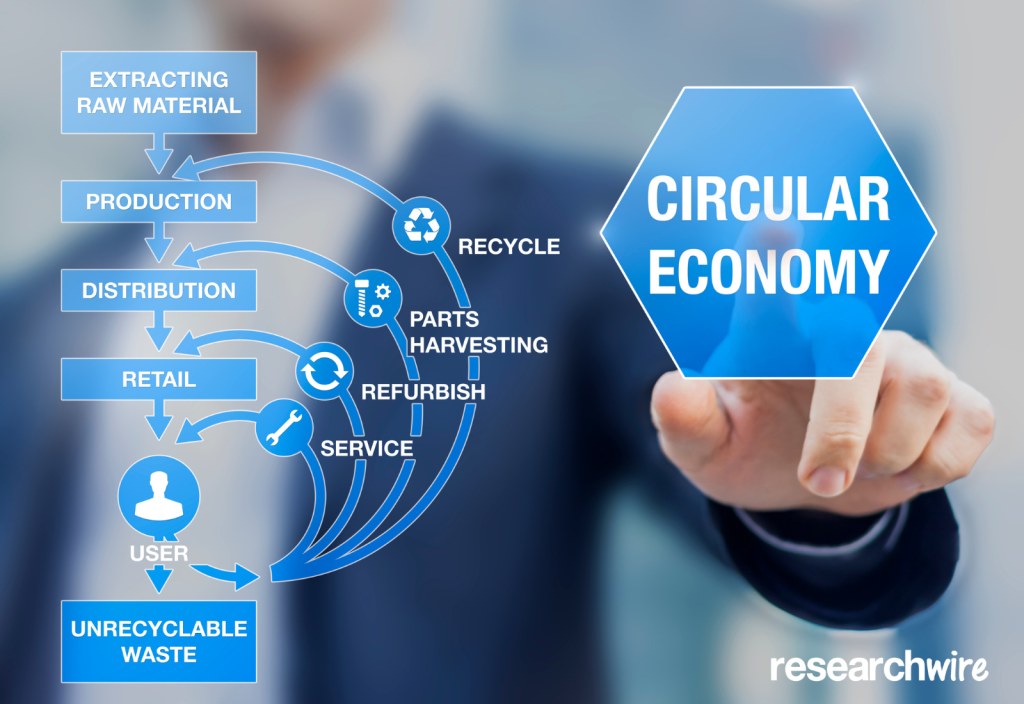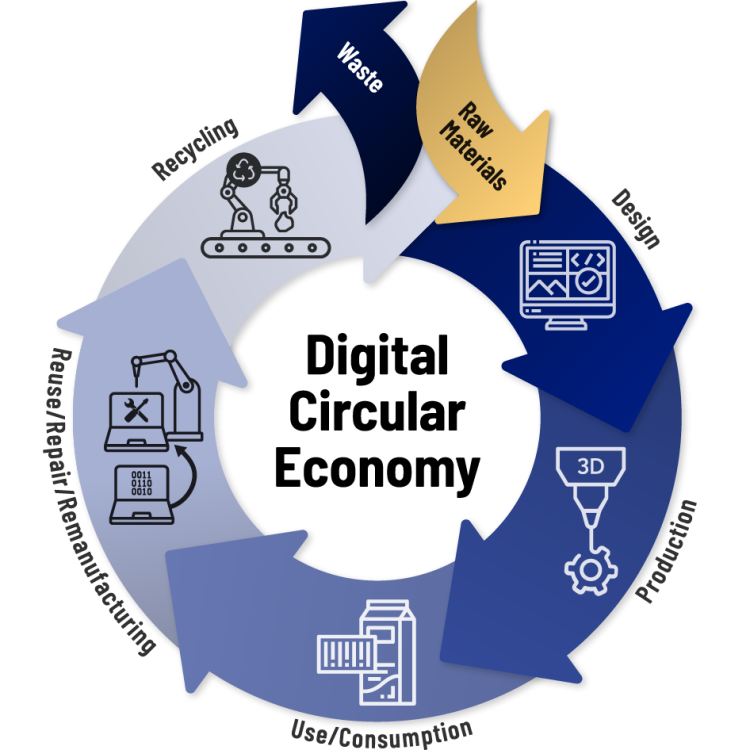Introduction: Closing the Energy Loop
The global energy transition stands at a defining moment. For over a century, human civilization has relied on a linear energy model — extract, burn, and emit. Fossil fuels have powered industry, mobility, and progress, but at a catastrophic cost: ecological degradation and climate instability.
Today, however, a new paradigm is emerging — the circular energy system. In this model, energy is not consumed and wasted but regenerated, recaptured, and reintroduced into the system. Driven by renewable sources, digital intelligence, and storage innovations, circular energy seeks to close the carbon and resource loops, creating a sustainable, self-reinforcing energy ecosystem.
This article explores how circularity is reshaping the global energy landscape — from smart grids to hydrogen networks, from carbon capture to community energy — and why circular energy is key to achieving a regenerative civilization.
1. From Linear to Circular Energy: A Paradigm Shift
1.1 The Limits of the Linear Model
Traditional energy systems follow a linear trajectory: extraction of fossil fuels, conversion to electricity, consumption by end-users, and eventual waste in the form of carbon emissions and heat. This model has reached ecological and economic limits.
In contrast, circular energy systems view every energy flow as a potential input for another process — where waste heat is recovered, carbon is reused, and renewable sources continuously replenish the grid. The principle is simple: nothing is lost; everything circulates.
1.2 The Three Pillars of Circular Energy
Circular energy operates on three foundational pillars:
- Renewability: Energy must come from regenerative sources like solar, wind, hydro, and biomass.
- Recoverability: Energy losses — whether heat, chemical, or mechanical — are minimized and reused.
- Resilience: Systems must adapt and self-balance through digital control and storage mechanisms.
This triad transforms energy from a consumable resource into a dynamic regenerative flow.
2. Renewable Energy and Closed-Loop Systems
2.1 Solar and Wind: The Infinite Inputs
Solar and wind power form the cornerstone of circular energy. They generate electricity without depleting natural capital. Yet, their intermittency poses challenges — requiring systems that can store, redistribute, and synchronize power efficiently.
Countries like Denmark and Germany are already operating circular renewables grids, where surplus wind energy powers hydrogen electrolysis, while waste heat from power plants warms nearby buildings — closing multiple loops simultaneously.
2.2 Energy Storage as the Circular Connector
Storage technologies — from lithium-ion batteries to pumped hydro and next-generation solid-state or gravity storage systems — make circularity possible by bridging temporal gaps between supply and demand.
Emerging innovations like flow batteries, which use liquid electrolytes for infinite charge cycles, and second-life EV batteries (repurposing used electric car batteries for stationary energy storage), represent circularity in practice.
China’s CATL and Europe’s Northvolt are already developing battery recycling ecosystems that extract lithium, cobalt, and nickel for reuse, ensuring that even storage materials remain part of the circular flow.
3. Hydrogen and the Circular Carbon Economy
3.1 The Rise of the Hydrogen Cycle
Hydrogen is often hailed as the missing link in the renewable transition. Produced through electrolysis powered by renewables, green hydrogen emits no carbon and can store excess energy seasonally — effectively acting as the “battery” of the circular energy grid.
Hydrogen fuel cells convert it back into electricity with only water vapor as a byproduct. When this vapor is recaptured and reused, it forms a closed-loop hydrogen cycle, ideal for decarbonizing heavy industry, aviation, and long-haul transport.
3.2 Carbon Capture, Utilization, and Storage (CCUS)
The carbon cycle is central to circular energy. Instead of treating CO₂ as waste, CCUS technologies capture emissions from industrial sources and reuse them as feedstocks for fuels, building materials, and chemicals.
For instance, Iceland’s CarbFix project injects captured CO₂ into basalt rock, mineralizing it into stable carbonates — effectively turning emissions into stone. Meanwhile, CarbonCure in Canada adds captured CO₂ into concrete, strengthening it while sequestering carbon permanently.
3.3 Synthetic Fuels and the Rebirth of Carbon
When hydrogen is combined with captured CO₂, it produces synthetic hydrocarbons—fuels that can replace gasoline, diesel, or aviation kerosene. Unlike fossil fuels, these e-fuels participate in a circular carbon loop: emissions from combustion are the same molecules later recaptured and reused.
4. Smart Grids and Digital Circularity
4.1 Intelligent Energy Networks
Circular energy relies on digital intelligence — grids that learn, adapt, and optimize in real time. Smart grids integrate data from sensors, smart meters, and distributed energy resources (DERs) to balance flows dynamically.
AI algorithms forecast demand and reroute energy automatically, ensuring that renewable inputs are maximized and waste minimized.
Japan’s Fukushima Smart Community, for example, combines solar, hydrogen, and AI control systems, achieving near-100% energy self-sufficiency while maintaining grid stability.
4.2 Peer-to-Peer Energy Exchange
Blockchain enables peer-to-peer (P2P) energy trading, where households and businesses buy and sell renewable power directly. This decentralizes energy ownership, creating local circular microgrids that reduce transmission loss and empower communities.
Projects like Power Ledger (Australia) and LO3 Energy’s Brooklyn Microgrid (USA) exemplify how citizens can become both producers and consumers—“prosumers”—in a circular energy economy.
5. Industrial Circular Energy Applications
5.1 Waste-to-Energy (WTE) 2.0
Modern WTE facilities no longer simply burn waste; they harvest energy, recover materials, and neutralize pollutants through closed-loop processes.
In Sweden, over 99% of municipal waste is recycled or converted into energy, powering district heating systems and industrial operations — a model of circular efficiency.
5.2 Industrial Symbiosis and Energy Sharing
In circular industrial clusters, energy and materials flow symbiotically. A factory’s waste heat powers neighboring facilities; one plant’s CO₂ emissions become another’s raw input.
Denmark’s Kalundborg Symbiosis—a partnership among energy, biotech, and manufacturing companies—has achieved a 100% circular energy exchange system, reducing CO₂ emissions by 250,000 tons annually.

6. Circular Urban Energy and Smart Cities
6.1 Urban Energy Loops
Cities, which consume over two-thirds of global energy, are ideal testbeds for circular systems. Smart infrastructure integrates renewables, electric mobility, and building energy recovery into unified networks.
For instance, Amsterdam’s Circular City Initiative recovers energy from wastewater treatment, captures building heat, and uses AI-based district grids to redistribute energy efficiently.
6.2 Electrification and Transport Integration
Electrifying mobility — from EVs to autonomous shuttles — transforms vehicles into mobile energy nodes. Through bidirectional charging (V2G), cars can return excess electricity to the grid, stabilizing supply and supporting renewables.
Cities like Oslo and Singapore are already piloting EV-based energy ecosystems, where vehicles, buildings, and grids interact in real time to balance urban energy flows.
7. Policy and Governance for Circular Energy
7.1 Global Policy Shifts
Circular energy aligns with major policy frameworks like the European Green Deal, Japan’s Carbon Neutral Strategy, and China’s Dual Carbon Goals.
Governments are introducing legislation to incentivize resource recovery, enforce energy efficiency standards, and promote extended producer responsibility (EPR) in energy infrastructure.
7.2 Financing the Transition
Circular energy projects require massive investment but promise strong returns through resource efficiency and resilience.
Green finance tools—like green bonds, carbon credits, and sustainability-linked loans—are now mobilizing capital for circular energy startups and infrastructure worldwide.
7.3 The Role of International Cooperation
Global initiatives such as the Mission Innovation Net-Zero Industries and the International Renewable Energy Agency (IRENA) foster cross-border research on circular technologies, sharing best practices and harmonizing carbon accounting standards.
8. Challenges and Opportunities
Despite its promise, circular energy faces technical and institutional hurdles.
- Storage scalability remains a challenge for intermittent renewables.
- Infrastructure inertia—legacy fossil systems—slows circular deployment.
- Data interoperability and cybersecurity issues hinder digital energy sharing.
Yet, the opportunities are immense: decarbonized economies, resilient grids, and energy democratization. Circular energy could redefine geopolitics by reducing dependency on fossil resource monopolies and empowering local production.
9. Vision: The Regenerative Energy Civilization
In the circular energy future, the grid becomes a living organism—intelligent, adaptive, and self-healing. Every building, car, and factory participates in a synchronized dance of energy creation, storage, and redistribution.
Energy ceases to be a commodity and becomes a commons, co-managed by citizens, guided by algorithms, and sustained by nature.
Such a civilization will not merely sustain itself—it will regenerate the ecological systems upon which it depends.
Conclusion: From Consumption to Circulation
The shift to circular energy is more than a technological upgrade—it is a civilizational transformation. By closing the loops of energy and carbon, humanity can finally harmonize progress with planetary balance.
Circular energy systems embody a new ethos: what we take, we return; what we use, we renew.
They represent not only the next step in energy evolution but the foundation of a truly regenerative world.











































